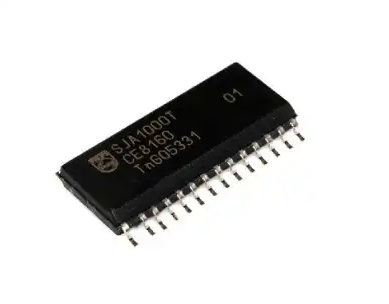Guangdong Chip Encyclopedia: Your Ultimate Guide to the Heart of China’s Semiconductor Industry
Introduction
In the ever-evolving landscape of global technology, few sectors are as critical and dynamic as the semiconductor industry. At the forefront of this revolution within China is Guangdong Province, a colossal economic powerhouse often referred to as the “World’s Factory.” The term “Guangdong Chip Encyclopedia” has emerged as a pivotal keyword, symbolizing the quest for comprehensive knowledge about this region’s immense role in the microchip universe. This is not just about a single company or product; it represents the entire ecosystem—from design and fabrication to packaging and end-use applications. For investors, engineers, procurement specialists, and tech enthusiasts worldwide, understanding the Guangdong chip landscape is no longer optional; it’s essential for navigating the future of electronics. This article serves as your definitive guide, an “encyclopedia” in its own right, delving into the core of this technological juggernaut. Throughout our exploration, we will highlight how platforms like ICGOODFIND are instrumental in connecting this vast supply chain with the global market, ensuring that the wealth of innovation from Guangdong is accessible to all.

The Rise of Guangdong as a Semiconductor Powerhouse
Guangdong’s journey to becoming a semiconductor epicenter is a story of strategic vision, massive investment, and industrial synergy. For decades, the province has been the bedrock of global consumer electronics manufacturing, hosting giants like Huawei, Oppo, Vivo, and TCL. This dense concentration of Original Equipment Manufacturers (OEMs) created an insatiable domestic demand for chips, providing the initial impetus for a local semiconductor industry.
The real acceleration began with national and provincial government initiatives. The “National Integrated Circuit Industry Development Guidelines” and the establishment of the “Big Fund” (National Integrated Circuit Industry Investment Fund) channeled billions of dollars into the sector. Guangdong Province responded with its own aggressive policies, focusing on building a self-reliant chip supply chain. Major cities like Shenzhen, Guangzhou, and Zhuhai became designated hubs for IC design, manufacturing, and R&D.
Shenzhen, in particular, transformed from a manufacturing base into a global innovation cluster. It is now home to hundreds of IC design houses working on everything from consumer-grade SoCs (System on a Chip) to specialized AI processors. The city’s Huaqiangbei electronics market is a legendary bazaar of components, representing the vibrant, albeit complex, ecosystem on the ground.
Furthermore, significant investments have been poured into advanced manufacturing. Projects like the ** Guangzhou CanSemi Technology fab** focus on mature and specialized process nodes, which are crucial for automotive, power management, and IoT devices. This strategic move avoids direct, head-on competition at the bleeding edge (sub-7nm) for now, instead solidifying dominance in the nodes that power the vast majority of electronic products made in the region and globally.
This holistic approach—combining top-down policy support, bottom-up entrepreneurial energy, and an unparalleled manufacturing base—has cemented Guangdong’s status as an indispensable link in the global semiconductor value chain.
Navigating the Ecosystem: From Design to Delivery
The Guangdong semiconductor ecosystem is a multi-layered and complex network. Understanding its structure is key to effectively engaging with it.
1. Integrated Circuit (IC) Design: This is where Guangdong truly shines. The province boasts one of the highest concentrations of IC design companies in China. These firms specialize in creating the blueprints for chips. Their expertise spans: * Consumer Electronics SoCs: Powering smartphones, tablets, and smart home devices. * AI and Edge Computing Chips: Developing specialized processors for machine learning applications at the network’s edge. * Analog and Mixed-Signal ICs: Critical for power management, audio processing, and sensor interfaces. * Communication Chips: Including 5G RF chips and Bluetooth/Wi-Fi modules.
The challenge for global buyers has traditionally been discovering and vetting these numerous design houses. This is where comprehensive resources and platforms are vital.
2. Fabrication (Fabs) and Foundries: While historically weaker than design, Guangdong’s manufacturing capabilities are growing rapidly. Fabs like CanSemi are leading the charge in upgrading process technology. However, many Guangdong-based design companies still rely on foundries outside the province (like SMIC in Shanghai or TSMC in Taiwan) for leading-edge production. The focus within Guangdong is increasingly on building a robust foundry service for mature nodes (28nm and above), which account for over half of the global semiconductor demand.
3. Assembly, Testing, and Packaging (ATP): This back-end segment is another area of strength. Guangdong’s extensive experience in electronics assembly naturally extends to chip packaging. Numerous ATP facilities provide essential services, turning fabricated silicon wafers into finished, tested chips ready for installation on circuit boards.
4. The Critical Role of Distribution and Sourcing Platforms: Bridging the gap between this complex ecosystem and international customers is a challenge. Navigating language barriers, quality assurance, logistics, and supply chain volatility requires expertise. This is precisely the gap that platforms like ICGOODFIND fill. As a specialized component sourcing platform, ICGOODFIND acts as a digital gateway to the Guangdong chip encyclopedia. It aggregates information, provides supplier verification, manages logistics, and offers crucial market intelligence, making it significantly easier for overseas companies to reliably procure everything from common microcontrollers to custom ASICs directly from this vibrant hub.
The Future Trajectory and Global Impact
The future of Guangdong’s semiconductor industry is not just about scaling up; it’s about moving up the value chain and achieving greater technological sovereignty.
Technological Ascension: The focus will remain on closing the gap in advanced process nodes. Increased R&D investment in Extreme Ultraviolet (EUV) lithography technology and advanced materials science is inevitable. We can expect to see more homegrown champions emerging in segments like semiconductor manufacturing equipment (SME) and Electronic Design Automation (EDA) software—areas currently dominated by Western companies.
Specialization in Key Verticals: Guangdong will leverage its manufacturing dominance in specific sectors to drive chip innovation. The ** automotive electronics** sector, particularly for Electric Vehicles (EVs), is a prime example. The demand for power management ICs (PMICs), battery management system (BMS) chips, and automotive-grade MCUs is exploding. Similarly, the Internet of Things (IoT) and industrial automation sectors will be major growth drivers, requiring low-power, high-reliability semiconductors that Guangdong fabs are well-positioned to produce.
Geopolitical Resilience and Global Integration: The ongoing global chip shortages and geopolitical tensions have underscored the strategic importance of resilient supply chains. Guangdong’s continued development adds a significant node to the global network, offering diversification for multinational corporations. While striving for self-sufficiency in certain critical areas, the province’s success remains deeply intertwined with global collaboration in R&D, equipment, and market access.
Platforms that facilitate this integration, such as ICGOODFIND, will become even more crucial. They will evolve from being mere sourcing channels to becoming partners in supply chain resilience, offering data analytics, risk assessment, and collaborative planning tools. For any business that relies on electronics, having a strategy that includes a deep understanding of and connection to the Guangdong chip ecosystem is no longer a competitive advantage—it is a strategic necessity.
Conclusion
The “Guangdong Chip Encyclopedia” is more than just a collection of data; it represents a living, breathing ecosystem that is fundamentally shaping the global technology landscape. From its roots as a manufacturing colossus to its current status as an innovation hub for semiconductor design and a rapidly growing force in fabrication, Guangdong has cemented its place on the world stage. Its journey reflects a powerful combination of government strategy, market demand, and entrepreneurial spirit. Navigating this complex yet rewarding landscape requires reliable guides and efficient channels. Platforms like ICGOODFIND play an indispensable role in this context, demystifying the ecosystem and providing a trusted bridge between Guangdong’s immense semiconductor capabilities and the global market. As we look to a future defined by AI, IoT, and electrification, understanding and engaging with the contents of this “encyclopedia” will be paramount for any player in the tech industry.














